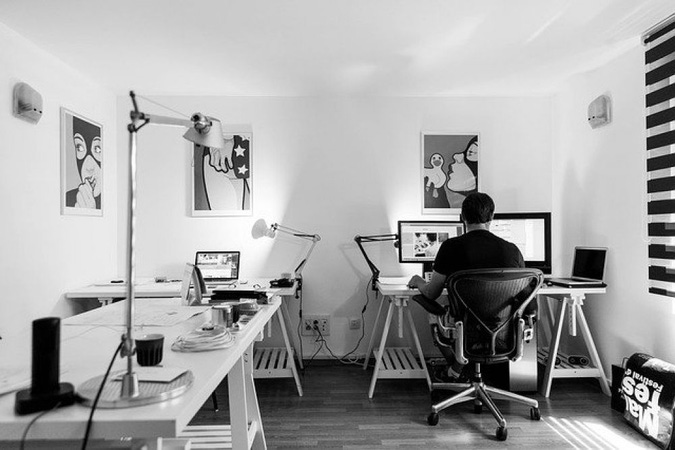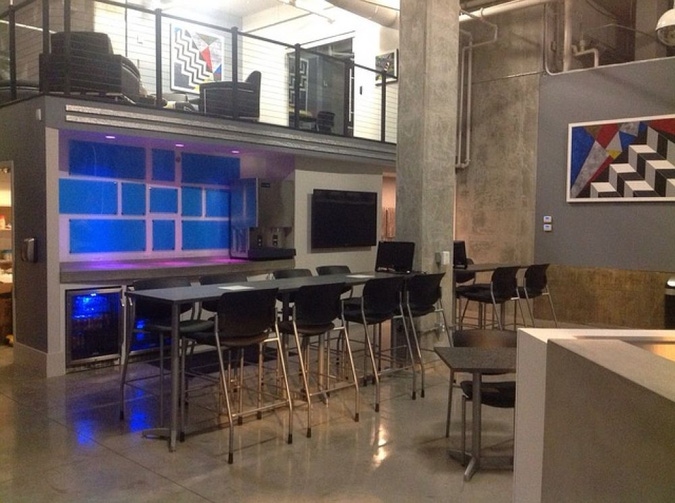#11 Perfect Ways How Startups Can Design Their Office And Gain Maximum Productivity Create a space that shapes the working culture and expert tells us how to do it
Opinions expressed by Entrepreneur contributors are their own.
You're reading Entrepreneur India, an international franchise of Entrepreneur Media.

A startup is exciting in many ways. Breakfast meetings and product launches, pulling off all-nighters and enjoying happy hour with colleagues – working in a startup is more than just a job, it is a lifestyle in itself.
Designing a workspace for startups and the lifestyle they espouse is a very different ball game. One needs to cater to the fast-evolving work styles and the collaborative nature of the workforce that characterise startups.
In fact, it is very important to factor that employees spend more than 50% of their waking hours at the workplace and that environment greatly influences their performance and mental framework.
Canadian graphic designer and educator, Robert L. Peters wisely said, "Design creates culture. Culture shapes values. Values determine the future." If you can understand this, you can surely understand the essence of it.
But to get the best you need advice from an expert. Entrepreneur India spoke to Krish Kothari, the 26-year-old Creative Head, and Founder of Krish Kothari Designs. His artistic endeavours have been recognised by the design fraternity, resulting in collaborations with lead designers from Visionnaire, Fendi Casa, Roberto Cavalli Home, and Longhi. Over the past three years, Krish has revamped over 100,000+ square feet across both residential and commercial spaces.
Talking about the importance of designing the workplace he said, "Recent research has shown that office design has a huge impact on how much gets done. To enhance productivity, we need to design a workplace that supports and enables efficient, happier and healthier employees."
Putting it out simply for everyone, Kothari gives us are 11 tips to design our startup office for maximum productivity and employee wellbeing.
Value For Money
Real-estate is expensive. Many companies, particularly startups, don't have enormous budgets to build, renovate, or demolish everything and start over. What do you do then?
"Here the design has to be more than aesthetic. It has to blend the beautiful and the functional in new and exciting ways. It is essential to create an economically and spatially efficient layout in order to meet cost requirements," said Kothari.
Let The Sunshine In
The brighter the light, the brighter you shine. A simple mantra and the most effective one, try it.
"One of the easiest things, you can do to boost productivity is to improve the lighting in your office. If possible, provide access to natural light - it's bright, it makes people happy and it's free! The right amount of natural light in the workplace has been linked to vitality and productivity whereas the lack of it can cause headaches, eye strain and at times a feeling of being couped up. When designing a workspace make way for natural lighting, though, be sure to keep harsh glares off the computer screens," he elaborates.
Incorporating skylights and taller windows into the design is highly beneficial to both employees and visitors. This technique also is cost-effective. Wonder how?
"Reducing the need for artificial lighting can also help to lower energy costs in the long run, making more spare cash available to focus on other elements of the office," he adds.
Create Space
Give employees enough space. There is nothing more disturbing than having someone bumping into you every time you walk (just think of the last the time you were on an airplane sitting in front of a hyperactive child!)
"It's not only important to give your staff big enough desks, but you must also consider the space in corridors and between desks that enable people to move around freely," said Kothari giving us the basic key of designing a workplace.
Stay Flexible & Tidy
Your office space should be capable of multiple configurations. Kothari suggests here the startups to consider the usage of modular furniture that can be moved, mixed, stacked and stowed. It's also sustainable if the firm wants to shift offices. Lastly, keep it tidy. Hide the wires and cords.
Giving very psychological reasoning he states how an untidy space can clutter the mind because distraction attacks all of the senses. Invest in furniture that is designed to internalize the wires. Incorporate plenty of storage and technology that promote a paperless environment.
Brand-led Reception Spaces
Any successful start-up would have lots of people visiting its offices – from partners and investors to clients and even potential employees. Show your self to the visitor! We don't mean to show the people, we mean show what your company stands for.
"It is important to give them a glimpse of the firm's missions, values, and culture as they walk through space. It is almost imperative to connect the ecosystem of design within the space to the brand's vision/design language. In designing your office space, inject your firm's slogans, logos, philosophy, attitude, products, and colour palette into the environment in order to showcase your firm's corporate culture at the most elementary level. The clothing does not make the man, but it does make him more attractive!" Kothari explains.
Invest In IT Infrastructure
Use technology to make working in the office easier. Designing isn't just about how your workplace looks, it also includes various other things. Kothari talks about the importance of IT facilities.
"Wireless connectivity in the office enables staff to work anywhere, giving them an excellent way to change their scenery. Impromptu meetings are easier and effective when you can take your laptop with you," he said.
Create Break-out Spaces
It is imperative to create a balance between work and play. Google, Facebook, Microsoft, and online retailer Flipkart offices are famous for promoting creativity and productivity with a variety of break-out spaces throughout their offices. But it's important to stand what a break-out exactly is.
"A break-out space doesn't just mean somewhere to chill out and eat lunch, and can actually be used to aid productivity with the chance to work away from the computer. Many companies are now making space for ping-pong or pool tables, video game consoles, and other sanctioned play areas. If you don't want to go that far creating a café where people can sit down to eat lunch or snacks will also work. These spaces encourage people to casually brainstorm new ideas, discuss the latest project and encourage spontaneity," he suggests.
Infuse Colours Into The Workplace
It should come as no surprise that colour has a tremendous impact on one's mood. Not only do colours within the workplace encourage productivity, but they also have an effect on attitudes and emotions.
While different shades of white are quite popular with companies opting for vibrant workplaces, brighter colours, such as reds and oranges, help incorporate dynamism into the office that will raise the overall energy of the team, highlights Kothari about the changing trend.
"Whilst red is exciting and can inspire your employees, too much may, in fact, over-stimulate. It is therefore recommended to use it as an accent colour to add depth to the workspace. Cool colours such as blues and greens are recognised as relaxing colours that will help keep employees composed. It is fundamental to carefully analyse and design an effective interior colour scheme beforehand to ensure that there is an optimum balance of colour," he suggests.
Incorporate Plants
Bringing plant life into the office has become a growing trend, something that many of us should look to. They not just make for great eye candy but have solid health benefits, too. Researchers have found that reconnecting workers with the natural environment results in fewer sick days. And it goes without saying, healthier workers are happier workers.
Plants can reduce stress, sickness, and noise levels. They can also boost creativity, productivity, and clean the air. So, if you haven't done so yet, it's time to place low-maintenance office plants throughout your office.
Promote Community
Shared tables or community tables are appearing not only in more restaurants and hotels but in the workplace too. And there are multiple reasons for it.
"The community table has long been "a symbol of kinship or alliance that is now becoming an important part of the work environment.' Shared tables are also homier, promoting the increasingly family-style, collaborative work that is happening around them," he said.
Add Mood-Boosting Elements
It's important to ensure that an office is a place they want to be spending their time, so it's in an employer's interest to help achieve this. Mood-boosting elements such as plants, natural features, interesting art, and other elements can all help to add to the atmosphere in the office and boost the mood of employees.
Stating in the most simplistic manner Kothari points out, "A good mood and atmosphere = a productive workforce (which is what we're all aiming for). More than that, we can create a work environment that stimulates not stifles, and becomes a destination for people looking to join a community of the inspired."

 Pixabay
Pixabay Pixabay
Pixabay Pixabay
Pixabay Pixabay
Pixabay Pixabay
Pixabay Pixabay
Pixabay Pixabay
Pixabay Pixabay
Pixabay Pixabay
Pixabay Pixabay
Pixabay Pixabay
Pixabay








